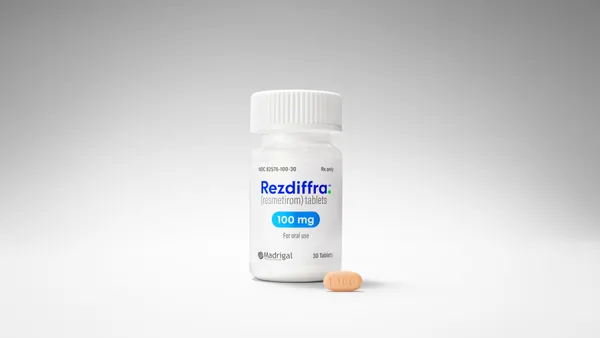Year in Preview
e-marketing and sales
E-tactics will become important as a way to reach both consumers and physicians as mass-media promotions face continued resistance from regulators. The Internet is an ideal channel for transmitting both brand-specific and educational campaigns, especially through interactive content. The potential for improved efficiency and cost savings are great, both to industry and other healthcare providers, according to Dr. Gordon Low, lead analyst and author of ePharma: The Online Pharmaceutical Industry, 2006-2011, published by Visiongain. E-Marketing Apending on e-marketing and promotion by the pharmaceutical industry will grow steadily from 2006 to 2011, reaching more than $480 million by 2011, according to a report by Visiongain. There also will be an expansion of e-prescribing and online sales of pharmaceuticals. But based on the report, analysts predict that spending on traditional promotional channels — especially detailing — will overshadow investments in pharmaceutical e-marketing from 2006 to 2011. “Pharmaceutical e-marketing to consumers and prescribing doctors will continue to grow steadily,” Dr. Low says. “Online technologies will become increasingly important as mass-media DTC advertising faces growing resistance from consumers and regulators. Also, diminishing returns from salesforces will drive the industry further toward e-detailing.” According to data from TGaS Advisors, spending for consumer online programs will increase, while spending for physician programs will remain flat or decrease. “Pharma companies will spend more on Internet marketing to reach consumers in 2007, while Internet marketing budgets to reach physicians will remain flat,” says Stephen Gerard, managing partner at TGaS Advisors. “Benchmark results have shown there are demonstrated performance results in using the Internet in both consumer acquisition and retention, but brands are still struggling to find a clear, high-performing Internet program to reach physicians.” On the Sales Side As salesforce numbers continue to fluctuate even in light of the mounting evidence of reduced effectiveness, companies are evaluating other techniques to reach physicians. One such tactic is the use of closed-loop promotion, Mr. Gerard says. “Based upon our benchmarking data, there is an increase in the number of pharma companies accelerating their adoption of closed-loop promotion in a variety of formats,” he says. “Some companies are undertaking the change as a technology-driven initiative while others are using the technology capability as a foundation for more fundamental changes in how they approach their customers.” Mr. Gerard says this trend is necessitating closer collaboration among marketing, sales, sales operations, and information technology to coordinate creation, approval, and distribution of promotional materials in electronic form. Companies are adopting closed-loop promotion technology because it delivers a more personalized detail experience to prescribers. Sales representatives carry electronic detail aids that offer pertinent clinical reports, up-to-date promotional materials, and testimonials/video clips from key opinion leaders. “While the technology also allows companies to capture the detail statistics and subsequent prescriber activity for promotional response analysis, many companies are evaluating whether they will, in fact, use this aspect of the technology,” he says. Mr. Gerard says to address a shift in philosophy, some companies are creating a new role: the commercial operations executive. “We are witnessing a trend in large and midtier pharmaceutical companies to combine the sales and marketing operations functions under one senior executive,” he says. “The drivers for this change are recognition of the key roles these operations groups play in facilitating collaboration between sales, marketing, and managed markets, as well as the growing complexity involved across all these groups in developing and successfully executing key promotional programs.” Responsibilities of this new commercial operations function include coordination of product launch support activities, field-force expansions, and closed-loop promotion initiatives, all of which require detailed and complex project management in order to coordinate superior execution in the field and with target prescribers.” Kim Ramko, partner, business intelligence, Unisys, says operations teams are going back to basics and focusing on day-to-day processes to identify the gaps or duplications across the sales and marketing teams. “As organizations have evolved, the processes and data supporting them have become fragmented, which has led to the majority of the inefficiencies,” she says. “The industry experienced a wave of what everyone referred to as business process re-engineering seven to 10 years ago, but now we have learned that those efforts are only as good as the processes put in place to support ongoing business changes.” Ms. Ramko says to improve upon those changes, the industry has shifted to business process management (BPM). Regardless of the technology involved, the sales and marketing teams must be able to change requirements quickly to support marketing campaigns, incentive programs, and regulatory changes. The key to a BPM strategy is not only to identify the process improvements but also to illustrate how those requirements can be updated as the business changes. At Barrier Therapeutics Inc., Stephen Miller, VP of U.S. sales, strives to continuously improve the sales operations at the company, and he concentrates efforts on three fundamentals: metrics, communications, and flexibility. “We strive to measure everything we do, a process that we refer to as our metric’s pyramid,” Mr. Miller explains. “This is a method we use for measuring performance to achieve sustainable sales results. At the top of our pyramid is sales or prescription volume. The next layer in the pyramid is the number of sales calls made to healthcare professionals and the number of educational programs conducted by our sales team.” According to Mr. Miller, the pyramid consists of about six layers of submetrics. Each layer within the pyramid provides the company with diagnostics to identify areas of improvement. “We publish the metrics results on a monthly basis and on a regional level as a way to track our performance,” he says. “We identify where our performance gaps are and apply the appropriate resources to improve those gaps, whether it is through training, manager intervention, or marketing support.” The second fundamental is communication. “We value the results that effective communications bring to our sales organization,” Mr. Miller says. “We promote regular communications up and down the sales chain by conducting weekly conference calls with our sales organization, as well as weekly one-on-one calls with our regional managers and their sales teams.” In addition, the company established a Vice President’s Advisory Board (VPAB), made up of one sales specialist from each of the regions. The VPAB members solicit feedback from each of their teams on areas for improvement, areas of success, and other issues. The VPAB presents feedback to the management team monthly, and they work together to prioritize improvements, reinforce successes, and track initiatives. Flexibility is another important quality to the company. “As a small organization, we pride ourselves on changing quickly,” Mr. Miller says. “Based on diagnostics from our metrics pyramid, or feedback from our VPAB, we can enact changes quickly. We can mobilize new territories, change product messaging, develop tactical and strategic marketing initiatives, and implement training programs. While being a small organization has various challenges, it also has its advantages in that Barrier’s sales team can be more responsive.” PharmaVOICE welcomes comments about this article. E-mail us at [email protected]. Operations teams are going back to basics and focusing on day-to-day processes to identify the gaps or duplications across the sales and marketing teams. Kim Ramko, Unisys We are witnessing a trend in large and midtier pharmaceutical companies to combine the sales and marketing operations functions under one senior executive. Stephen Gerard, TGaS Advisors Thought Leaders Mark Bard. President, Manhattan Research, New York; Manhattan Research is a healthcare market research and services firm. For more information, visit manhattanresearch.com. Stephen E. Gerard. Managing Partner, TGaS Advisors, Princeton, N.J.; TGaS Advisors provides collaborative benchmarking for pharma/biopharma commercial operations. For more information, visit tgasconsulting.com. Dr. Gordon Low. Analyst, Visiongain, London; Visiongain produces conferences, publishes reports and newsletters, and provides consulting services. For more information, visit visiongain.com. Stephen Miller. VP, U.S. Sales, Barrier Therapeutics Inc., Princeton, N.J.; Barrier Therapeutics is a pharmaceutical company focused on developing and commercializing products in the field of dermatology. For more information, visit barriertherapeutics.com. Kim Ramko. Partner, Business Intelligence, Unisys, Blue Bell, Pa.; Unisys is a worldwide technology services and solutions company. For more information, visit unisys.com. Top Pharmaceutical Websites Visited By U.S. Physicians in 2006 “Although prescription volume is certainly an important ingredient in driving most physician traffic to a product site, the data show top sites typically include those with a direct-to-consumer advertising component as well as new products on the market,” says Mark Bard, president of Manhattan Research. “It is not just experience with a product that drives physician traffic to a specific site but in many cases the need for additional information. This represents a key promotional opportunity for pharmaceutical marketers today.” For the fifth consecutive year, Manhattan Research has determined the leading online physician destinations based on the number of physician visitors, as well as the content satisfaction of those who visit. In-depth analysis of top product and corporate pharmaceutical Websites, health portals, online journal sites, specialty-specific sites, newsletters, and society sites based on the research is now available to subscribing clients of the ePharma Physician v6.0 study. 1 Lipitor 2 Fosamax 3 Adderall XR 4 Advair 5 Plavix 6 Concerta 7 Singulair 8 Lexapro 9 Crestor 10 Zetia Source: ePharma Physician v6.0, Manhattan Research LLC, New York. For more information, visit manhattanresearch.com. We strive to continuously improve the sales operations at the company, and we concentrate our efforts on three fundamentals: metrics, communications, and flexibility. Stephen Miller Barrier Therapeutics Outlook: Technologys’ Impact On Marketing Strategies PharmaVOICE asked experts in sales and marketing what impact new technologies would have on their strategies. Stephen Gerard TGaS Advisors Increases in spending on consumers will be primarily in the areas of online media buys and support for relationship marketing. But spending in e-detailing will remain flat or decline because companies aren’t yet seeing the scalable ROI. Kim Ramko Unisys Sales and marketing teams are taking a closer look at “customer” profitability as part of a larger business or customer intelligence strategy to drive efficiencies. Information is being consolidated from both sources to determine if the efforts and the cost to serve a targeted physician are providing a positive return on investment. This requires both teams to work together to define how to track and distribute costs such as marketing campaigns, details, sample drops, and the efforts of other influencers such as thought leaders and medical liaisons.










